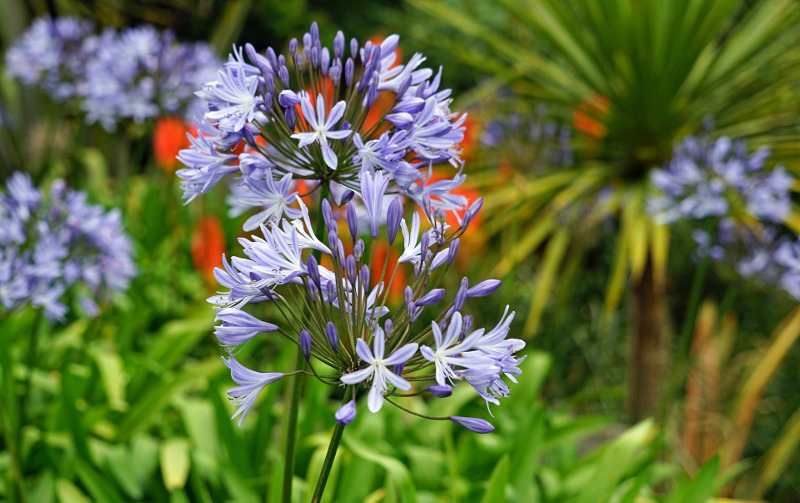Seasonal Agapanthus Treatment: Getting Ready For Winter Season and Summer season
Seasonal Agapanthus Treatment: Getting Ready For Winter Season and Summer season
Blog Article
Mastering the Art of Agapanthus Care: Vital Actions for Healthy And Balanced Development and Vibrant Flowers
In the realm of cultivation, the growing of agapanthus stands as a satisfying endeavor for those that seek to nurture these elegant blooming plants. From picking the best variety to mastering pruning methods, the trip towards cultivating flourishing agapanthus plants is complex and holds the vital to opening the complete potential of these organic treasures.

Picking the Right Agapanthus Variety

When selecting the appropriate Agapanthus selection for your yard, consider variables such as environment viability, flower color, and growth behavior. In addition, take into consideration the environment in your region to guarantee the Agapanthus variety you pick can thrive in your particular conditions. Recognizing the growth practice of various Agapanthus varieties is critical for correct positioning within your garden.
Ideal Planting Conditions
Thinking about the optimum environmental requirements is essential for successful Agapanthus growing. Agapanthus plants are delicate to cool temperature levels and need to be safeguarded from frost throughout winter season months.
To guarantee healthy growth and lively flowers, plant Agapanthus bulbs at a deepness of concerning 2-4 inches and room them 8-12 inches apart. Including organic issue, such as garden compost, to the soil can boost drainage and fertility, advertising durable origin development. Mulching around the base of the plants helps keep moisture and subdues weed development. Routine watering is important, specifically during the expanding season, to keep the soil continually wet however not waterlogged.
Watering and Feeding Tips
Keeping appropriate moisture degrees and providing necessary nutrients are crucial elements in the care regimen for Agapanthus plants. When it concerns sprinkling Agapanthus, it is vital to strike a balance. These plants favor continually damp soil however are prone to root rot if overwatered. Throughout the expanding period, water deeply when a week, making sure the soil is well-draining to avoid waterlogging. In hotter climates or throughout periods of dry spell, even more regular watering might be necessary to maintain the soil evenly moist. However, minimize watering in the winter months to prevent water logged problems.
Feeding Agapanthus is important for promoting healthy development and prolific flowers. Use a balanced fertilizer, such as a 10-10-10 formula, in the early springtime as brand-new growth emerges. By following these watering and fertilizing ideas, you can guarantee your Agapanthus plants prosper and create vivid, long-lasting blooms.
Trimming Strategies for Agapanthus
Pruning Agapanthus plants at the proper times and with appropriate techniques is critical for maintaining their health and wellness and advertising ideal growth and flowering. The excellent time to trim Agapanthus is in late winter or early springtime prior to brand-new growth arises.
Deadheading spent blossoms can also redirect the plant's energy right into producing more blossoms instead than setting seeds. If you desire to Click Here collect seeds her response for propagation, leave some flowers to mature and dry on the plant.
Remember to utilize tidy, sharp tools to make specific cuts and lower the threat of introducing illness. Agapanthus. Routine trimming will help keep your Agapanthus looking neat and healthy while making certain an abundant display screen of lovely blooms
Dealing With Typical Bugs and Conditions
After making certain appropriate trimming techniques for Agapanthus, it is essential to address usual insects and conditions that can impact the wellness and vigor of these plants. One typical parasite that impacts Agapanthus is the Agapanthus gall midge.
One more typical issue is fungal fallen leave spot, which offers as dark sores on the leaves. To stop fungal conditions, ensure excellent air blood circulation around the plants, avoid overhanging watering, and remove any infected leaves without delay. Additionally, Agapanthus plants can experience root rot if they are grown in badly draining pipes dirt. To avoid this, plant Agapanthus in well-draining dirt and stay clear of overwatering. By being watchful and taking punctual action against insects and diseases, you can aid your Agapanthus plants prosper and create lively blooms.

Verdict
To conclude, understanding the art of agapanthus treatment involves choosing the appropriate variety, giving optimal planting problems, proper watering and feeding, appropriate trimming techniques, and addressing usual pests and illness. By complying with these necessary steps, you can ensure healthy development and vibrant blossoms for your agapanthus plants. Bear in mind to consistently see post keep an eye on and keep your plants to promote their general wellness and long life.
To make sure healthy and balanced development and lively blooms, plant Agapanthus bulbs at a deepness of concerning 2-4 inches and room them 8-12 inches apart. By following these watering and fertilizing suggestions, you can ensure your Agapanthus plants thrive and generate vibrant, resilient blooms.
One common pest that affects Agapanthus is the Agapanthus gall midge. Furthermore, Agapanthus plants can endure from root rot if they are grown in improperly draining pipes dirt. By adhering to these important steps, you can guarantee healthy development and vibrant flowers for your agapanthus plants.
Report this page